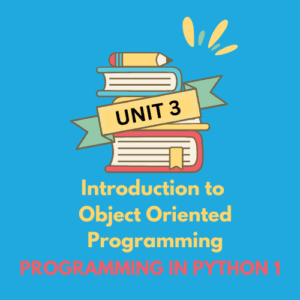
Click On the Download Button Below 
Introduction to Object Oriented Programming In Python :-
- Object-oriented programming (OOP) is a programming model that relies on the concept of classes and objects.
- An object can be defined as a data field that has unique attributes and
- It is used to structure a software program into simple, reusable pieces of code, which are used to create individual instances of objects.
Objectives of OOPs In Python :-
- Encapsulation: Bundles data and methods together, restricting direct access to some components.
- Abstraction: Simplifies complex systems by hiding unnecessary details.
- Inheritance: Enables reuse of code by allowing classes to inherit attributes and methods from other classes.
- Polymorphism: Allows different classes to be treated as instances of a common parent class and supports method overriding.
- Code Reusability: Reduces redundancy through inheritance and method reuse.
- Modularity: Organizes code
Summary of OOPs In Python :-
Object-Oriented Programming (OOP) in Python is a programming paradigm that organizes code into classes and objects. It focuses on four key principles:
- Encapsulation: Bundling data and methods that operate on the data into a single unit (class).
- Abstraction: Hiding complexity and exposing only necessary details to the user.
- Inheritance: Allowing one class to inherit attributes and methods from another, promoting code reuse.
- Polymorphism: Enabling different classes to use the same interface or method name but with different behaviors.
OOP helps create modular, reusable, and maintainable code by modeling real-world entities and relationships, making it easier to manage and scale applications.
